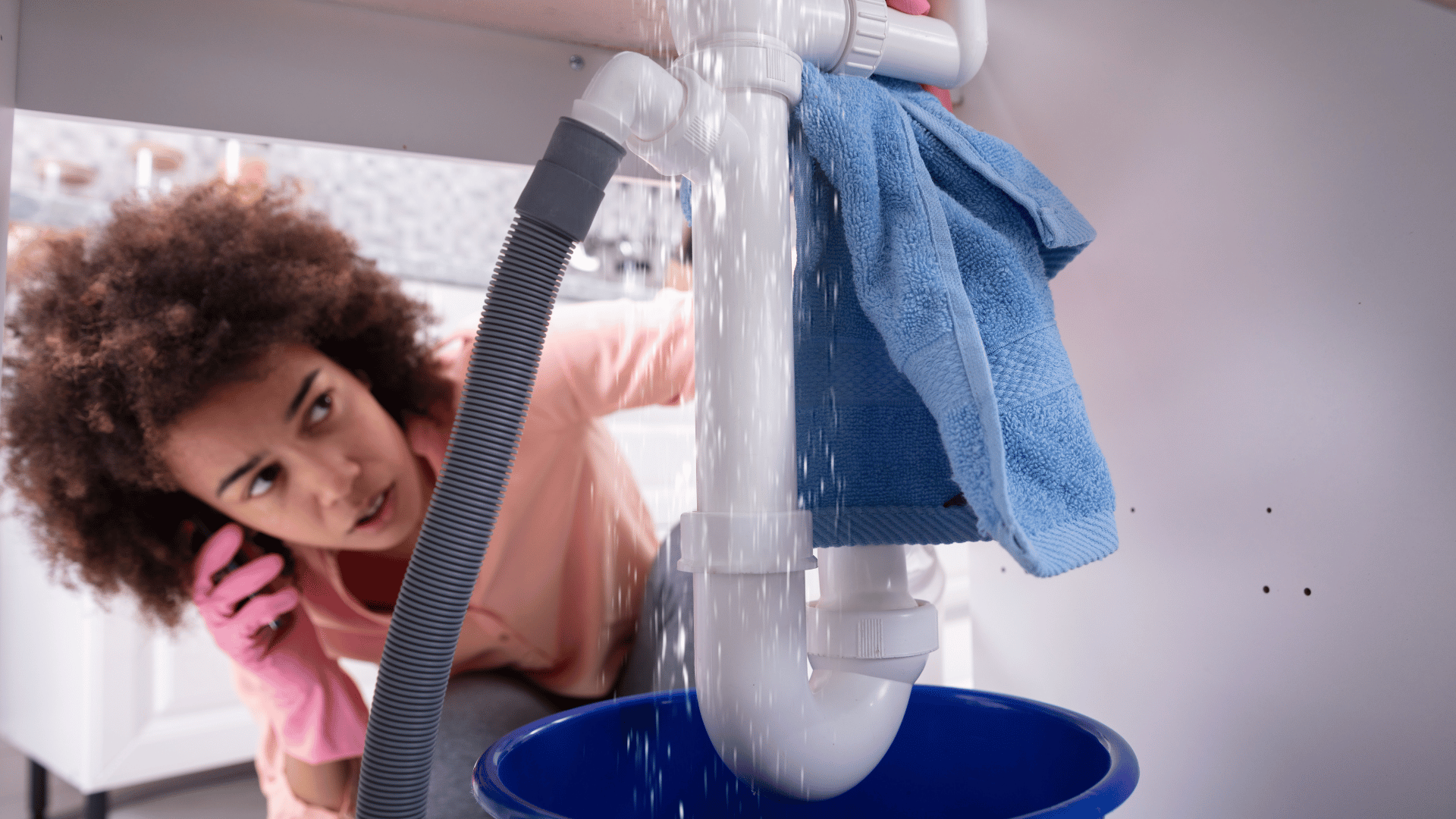As soon as a property sustains water leakage, two steps need to be taken. To stop the damage and prevent it from getting worse, you must quickly identify the root cause and notify the insurance company. However, what about a condominium that has a water leak?
The most common cause of damage to condominiums is water leaks, either from wall seepage on both interior walls and ceilings and exterior walls or from water leakages in sewage lines. Find out what the owner's and developer's full repair obligations are, along with the steps to take and available resources.
What are the possible causes of water leakage in a condominium?
There may be several reasons for water leakage in a condominium. The condo wall itself might have been the source of the damage.
• a leak caused by moisture or a faulty faucet seal causing kitchen or bathroom leakage.
• a broken-down drainpipe that can cause water seepage in waterproof pipes or water flowing from pipes and inside the walls of your unit.
• faulty plumbing and water-proofing measures of a home appliance (dishwasher, washing machine, etc.)
However, the building's common areas or a nearby apartment could also have caused the damage.
• backups in the sewer system causing water leakage.
• elevation of capillaries
• penetration of ground moisture via the roof, which, when overlooked, can cause structural damage to the roof.
• penetration via a wall outside the house that can cause dampened areas in house walls and wall seepage.
How to prevent water damage
To stop most water damage, there are a few precautions you can take. One common way to stop hair clogs in the plumbing, which can lead to water damage and disruption of the water supply, is to keep a strainer in the drains of your sink, bathtub, or shower.
When asking a condominium association board, one of the trickiest questions is:
Who bears the cost of any damage resulting from a water leak? As an illustration, let's say that water enters through the roof, seeps into upper condo unit #1, damages the common element interior wall, exterior wall, and floors along the way, and finally enters lower condo unit #2. Who bears the responsibility for harm to the common areas between condo units #1 and #2, as well as further damage to the roof?
The typical answer to this question is "It depends." I know you detest hearing that response, and most people detest providing it as well. But until you find out more, you have to provide that response. Moreover, the analysis is frequently difficult.
With any luck, this post will provide readers with more insight into the notorious water leak analysis. Three fundamental questions need to be addressed when analyzing a serious water leakage detection or intrusion question:
- What, exactly, was damaged?
- Who is responsible for maintaining and repairing the damaged component(s)?
1. What, exactly, was damaged?
Identifying what the water damaged ought to be your top concern. Carpet? Drywall? Itemized furnishings exterior walls? flooring underlayment? To prevent further damage, evaluate the extent of repairs, establish priorities, and decide whether to make an insurance claim, it is important to pinpoint the precise location of the water damage.
I recognize that you may be thinking, "But wouldn't it be better to find out where the water came from first? Yes, you do want to find out where the water came from to ensure that the malfunctioning component is fixed properly, but in terms of determining who is responsible for the water damage, the answer is no. It might not matter where the water came from in terms of who is entitled to reimbursement for the damage.
How can I tell if my condo or apartment has a water leak?
If you see what appears to be an old stain in a corner of your home and you haven't been noticing it, don't panic; the leak may have already been repaired. However, in certain instances, a dry water stain might suggest that no one is currently residing upstairs.
But if a water stain unexpectedly develops on your wall or ceiling over night, it most likely indicates that an active leak has started somewhere, which is obviously bad news.
2. Who is responsible for maintaining and repairing the damaged components?
The next step you should take after compiling the list of damaged roof components is to determine who is in charge of maintaining and fixing each one—the owner, family members, or the association. You should start by looking at the declaration, which is the Master Deed of Restriction, as it outlines the responsibilities for maintenance and repairs.
In most condominium communities, the declaration specifies that the owner is in charge of unit maintenance and the association is in charge of upkeep and repairs for the common areas. It seems simple, doesn't it? False. Take care not to assume anything about what is included in the unit versus what home owners say is included in the common elements.
A number of variables, including the origin of the leak and the conditions outlined in your lease or condominium agreement, will determine who is responsible for the water leak. Generally speaking, management is accountable if the leak results from normal wear and tear or a structural problem.
Tips
Here are some of the possible steps to take when you encounter water leakage in your condominium unit:
Examine the Lease/Condominium Agreement
The very first thing to do is go over the provisions in your lease or condominium agreement that address who pays for repairs in detail.
Capture images or videos of the water leak.
If the leak is severe enough to cause visible water drips, it is preferable to capture images or videos that demonstrate the leak's path. Get photographic and video proof of the water leak, too, assuming you're not too handy and are willing to climb up into the plaster, paint, or ceiling to try and find the source of and fix the leak.
This is due to the fact that water leaks can occasionally be very erratic and may depend on how frequently the source of the seepage is employed. It is therefore possible that the water seeping leak may not have been there when your management office arrived with their plumber to look into it. They find it challenging to determine the source of the water pressure and the leak as a result. That's why a picture or video is crucial.
NOTE: If you are not currently residing in a high-rise property that you purchased as an investment, make it a point to check on it as often as you can to prevent water leakage problems elsewhere. Water leaks can occur suddenly, and the longer they go unnoticed, the more damage they will do. The above image illustrates the onset of water leak-related property damage.
Be Patient
While it may seem reasonable in most cases that a leak affecting your home is probably caused by the unit upstairs, this is not always the case.
Be patient when locating the actual source of the leak. You can start pointing fingers at your neighbor right away. Making assumptions is unsafe.
Occasionally, it turns out that this is untrue. Following some discussion with your neighbor and additional research on what regular maintenance does, you might find that the source of the new leak was a sewerage pipe located inside that wall. In that case, the management body of your condo is responsible for supervising the repair.
Written Communication
Express your worries in writing, along with an explanation of the circumstances and a request for prompt action from management.
It is crucial to involve the management office of your condo or apartment when dealing with a water leak issue, as they can serve as an impartial third party in the event of a dispute.
One of the most important tasks your association or developer will have is putting the two parties in contact and assigning and hiring a technician or plumber to determine which party is in charge of repairing the leak and its source.
Legal Remedies
If the management does not act, you have two options: you can receive legal advice about bringing a civil lawsuit for damages and violation of contract, or you can register a formal complaint with the Housing and Land Use Regulatory Board (HLURB).
Payment Under Protest
If you determine that paying for an immediate repair is necessary for your health and safety, you should explicitly state in writing that you are doing so "under protest" in order to retain the right to demand payment at a later time.
As demonstrated above, analyzing water leak questions can be highly complex.
Is there another way to simplify it? Establish a maintenance and insurance chart that specifies exactly who is in charge of upkeep, repairs, and insurance for each part of the condo complex—the owner or the association.
Is there another way to simplify it? Adopt a policy on water leaks that outlines the exact location and precise actions the association will take to determine who is responsible for any damage caused by leaks. The above-described procedures would be followed by the water leak policy.
Is there a different way to make things simpler? Either add the above-mentioned maintenance and insurance chart or change the statement to handle liability for water leaks.
Applicable Laws
- Republic Act 4726 (The Condominium Act): Provides guidelines on the responsibilities of condominium owners and the condominium corporation.
- Civil Code of the Philippines: Articles pertaining to lease contracts and obligations of lessors and lessees can be applicable.
- Your Condominium's Rules and Regulations: Most condominiums have a set of rules that may specify who is responsible for what types of repairs.
Recommendations
According to the information you well being given, you shouldn't have to pay for the repairs if you had nothing to do with the water leak. To ensure that your lease or condominium agreement is properly reviewed and that you are guided in the right direction, it is advisable to consult a legal expert.
It is also advisable to get a wall water leakage detector to avoid future water leakage in your condominium.










